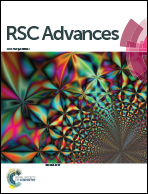In situ growth of NiO nanoparticles on graphene as a high-performance anode material for lithium-ion battery anodes with enhanced strain accommodation
Abstract
Nickel oxide (NiO) nanoparticles were directly formed on graphene nanosheets through in situ thermal decomposition of Ni(NO3)2·6H2O and were anchored tightly on the graphene surface. During the charge–discharge process, graphene nanosheets served as a three-dimensional conductive network for the NiO nanoparticles. The lithiation-induced strain was naturally accommodated because of the constraint effect of graphene. Thus, pulverization of NiO nanoparticles was effectively prevented.


 Please wait while we load your content...
Please wait while we load your content...